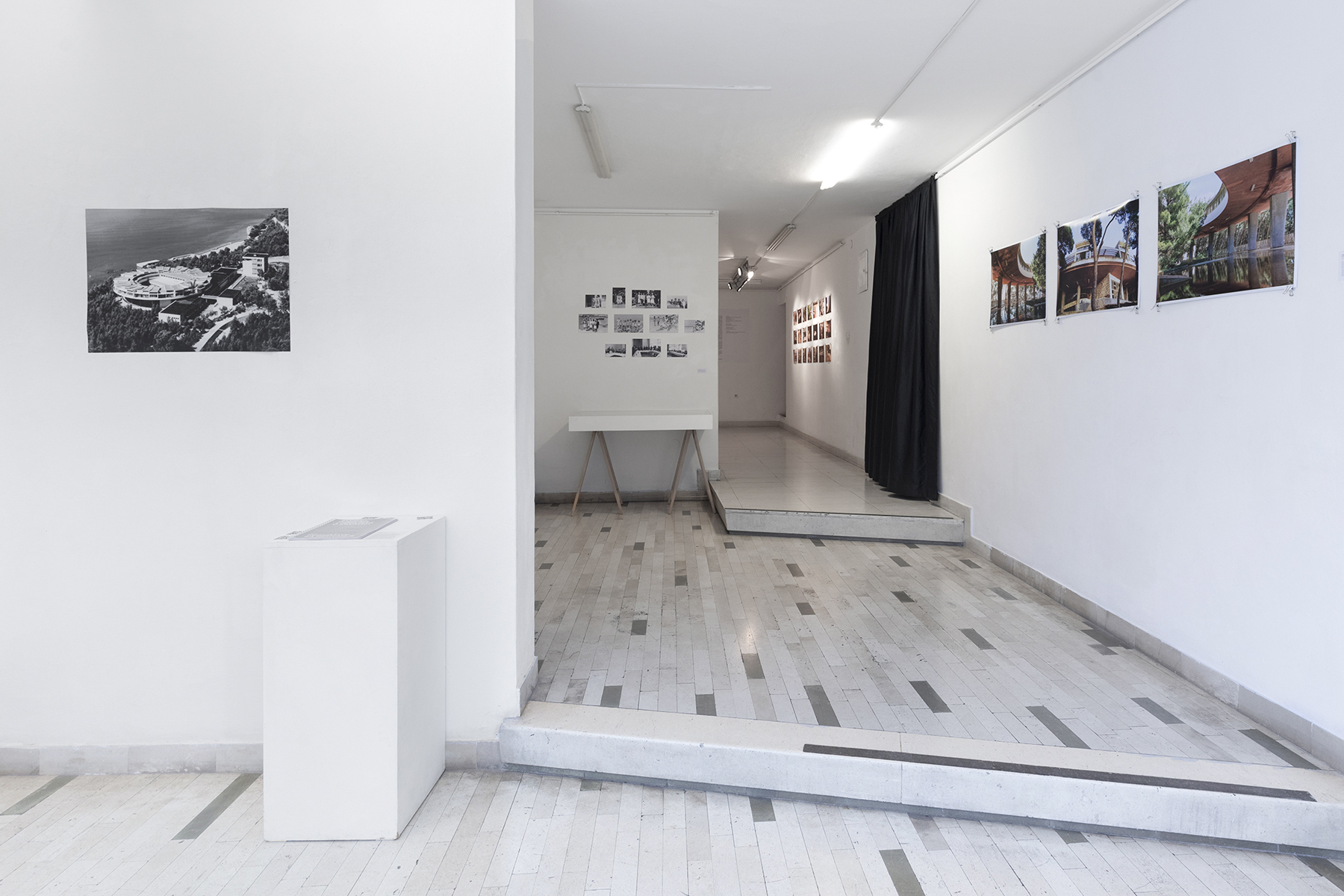(Dis)Trust The Storyteller. The Case f KRVAVICA Children Health Resort / Salon Galić Gallery from October 4 to 15, 2021
Artists: Doplgenger (Isidora Ilić, Boško Prostran), Duška Boban, Iniciative «Krvavica_art», Željko Blaće, Rikard Marasović (Family archive Marasović/ Štambuk Jurašin)
Concept / essay: Nataša Bodrožić (Slobodne veze/ Motel Trogir) /
Reasearchers and co-curators: Antonia Vodanović, Ivan Huljev (Udruga «Kačić»)
Photography of the exhibition set: Žaklina Antonijević
THE CHILDREN’S HEALTH RESORT
The circular building of the former Military Children’s Health Resort, one of the devastated architectural masterpieces built in the mid-1960s, designed by the architect Rikard Marasović, is the starting point of the exhibition. The building is located in Krvavica, a small town west of Makarska, in a pine forest, near the beach. Built during socialist Yugoslavia, it was military property, designed for the treatment and rehabilitation of children of insured military personnel who suffered from respiratory diseases. As its function was later changed from primarily medical to tourism-oriented, in 1973, the building became a military resort [1], and there were plans for further tourism development in the wider area. Due to the impossibility of financial self-sustainability of military and workers’ resorts on the Makarska Riviera at that time, an economic solution was found “in the inclusion of these capacities in commercial tourism” [2]. However, out of season, the military resort was open to people with special needs, low-income workers, elementary school students in recreational classes. According to the testimony of local residents and former employees, this was the case until 1990. [3] The Yugoslav People’s Army left Krvavica in 1991, leaving the building undamaged. [4] During the war, 1991-1995, it was used to accommodate refugees and the wounded, as well as to train special military units. In the early 2000s, the building was “demilitarized” and ownership of it was transferred from the Ministry of Defence to the state agency Club Adriatic. Subsequently, control over the building was relinquished, paving the way for gradual devastation that has reached unprecedented proportions to this day.
RIKARD ‘RIKO’ MARASOVIĆ
In parallel with the “rediscovery” of the children’s health resort and its affirmation, the focus of the professional public was directed towards the author of this exceptional work, architect Rikard Marasović. Antonia Vodanović finds it interesting that, despite the fact that he held prominent social functions in his lifetime, such as city representative, professor at the Faculty of Architecture in Zagreb and director of the Republican Institute for the Protection of Cultural Monuments, his work and high-quality architectural projects had almost never been published in contemporary architecture and urbanism journals. His contemporary, architect Igor Skopin, says that Rikard Marasovic was “lucid, uncompromising, an opponent of dogma and opportunism” who “could not overcome all the obstacles that had been set, from the conceptual design to the realization of the idea” and that he “needed a different character, one that would not provoke opposition and misunderstanding [6]. By composing the parts of a little-known biography, the fragments of the archives of his wider family, in this exhibition, we gain a subtle insight into his artistic work. In his spare time, he painted with watercolours, mostly using coastal motifs.
(DIS)TRUST THE STORYTELLER
Traces of the past can be lost, that past will be forgotten in the sense that it remains out of memory. But what about forgetting when traces remain?
This is not an exhibition on architecture. This is an exhibition about the loss of social (and the transformation of personal) memory due to radical social change and the consequences of that process. We observe the fate of Marasović’s cult building as a symptom, where we intertwine archival materials, original documents, records and photographs with the fictional narratives of the experimental film of the art duo Doplgenger. The ambivalence of Duška Boban’s photographs, which document the current state of Marasović’s architecture, almost stimulates perceptual deception, optical illusion that at times calls into question the reality of the scene itself. We transfer a street-art “sticker” from the interior of the children health resort building, where it was created as an authentic artistic expression and an attempt to “appropriate” the place by civic initiative. This work is just one in a series of (artistic) interventions in the building, as well as a direct comment on the attitude of local authorities and state institutions towards this architectural masterpiece, which they would like to see as an empty plot free for new construction to the taste of new spatial managers.
Nataša Bodrožić
